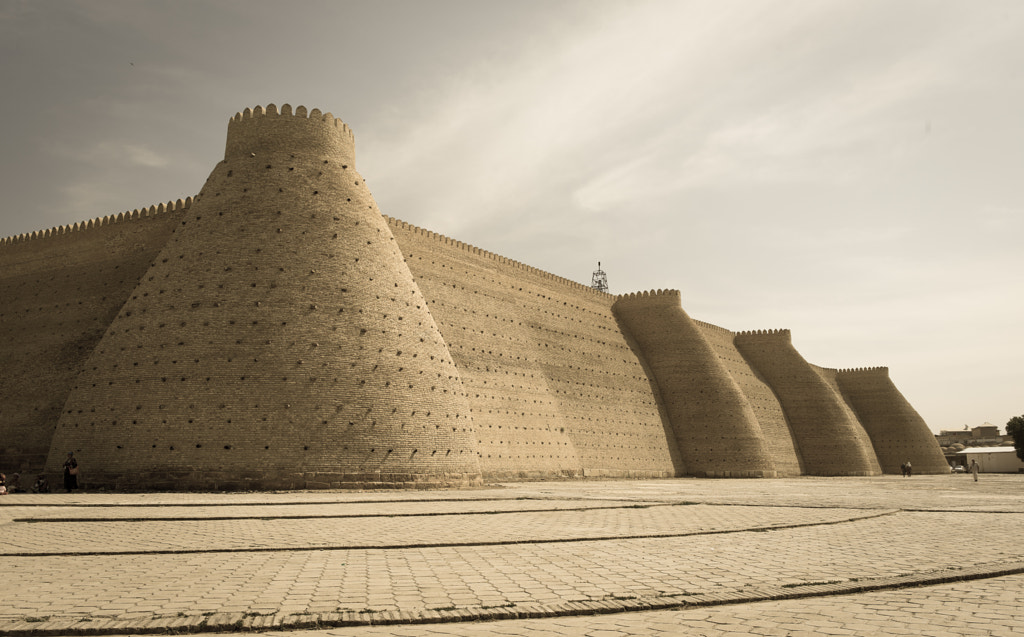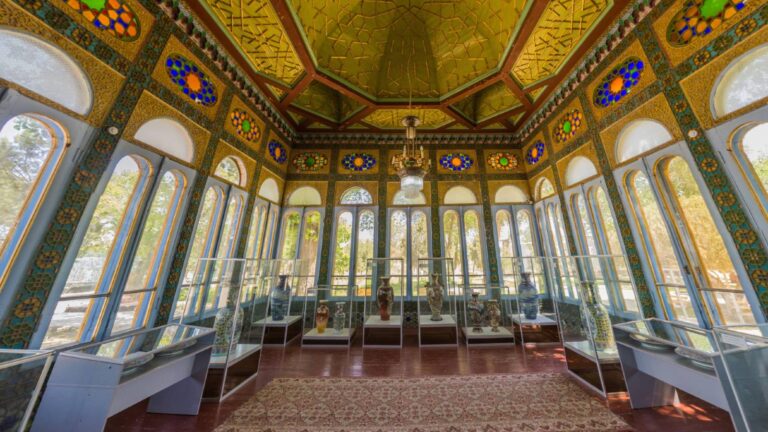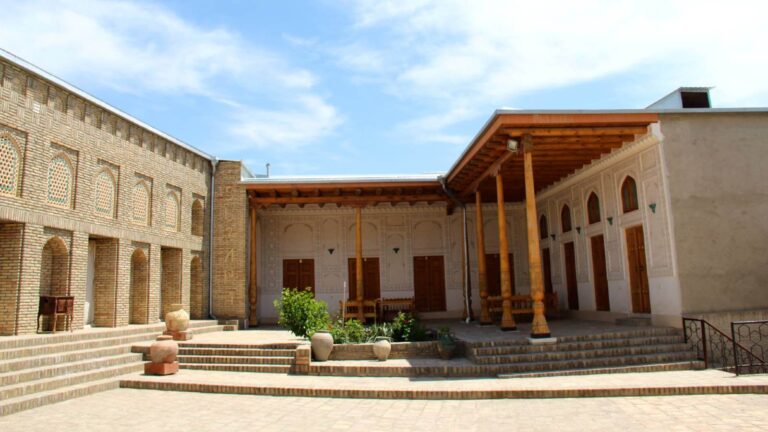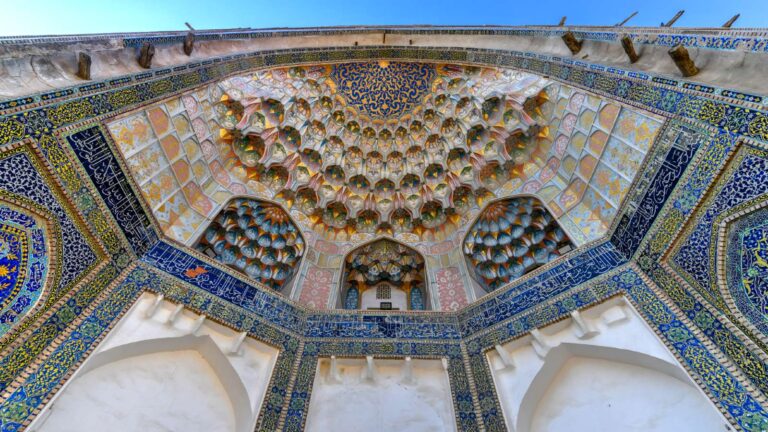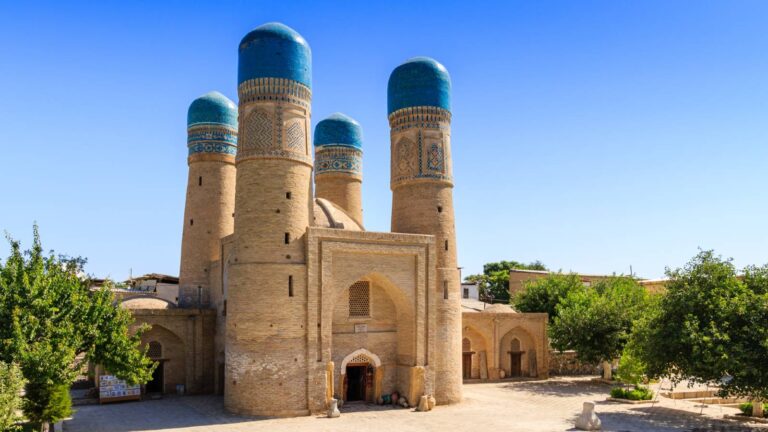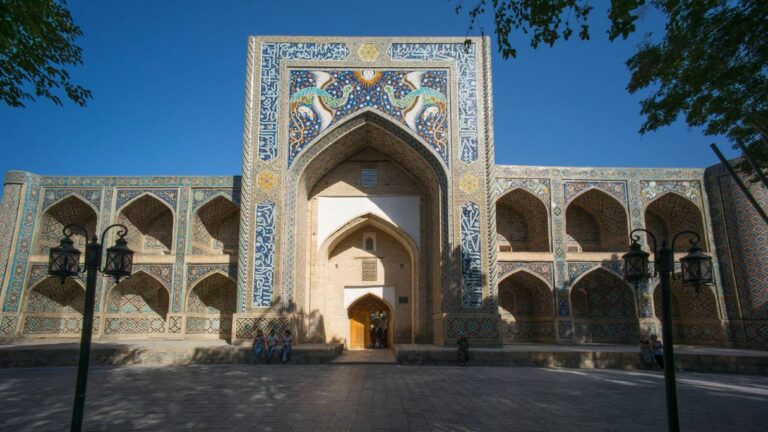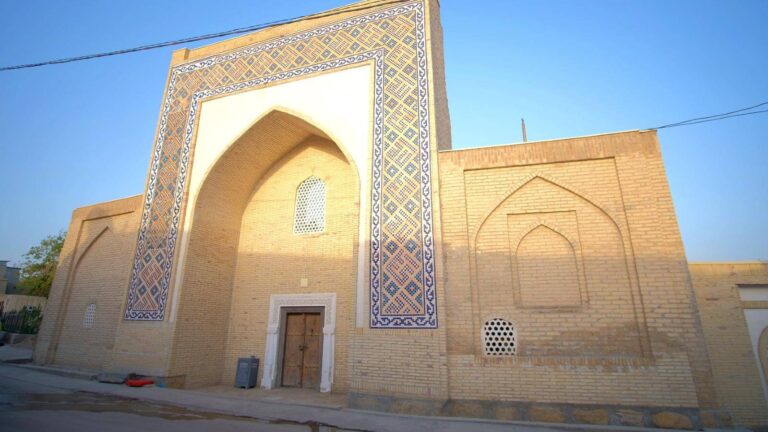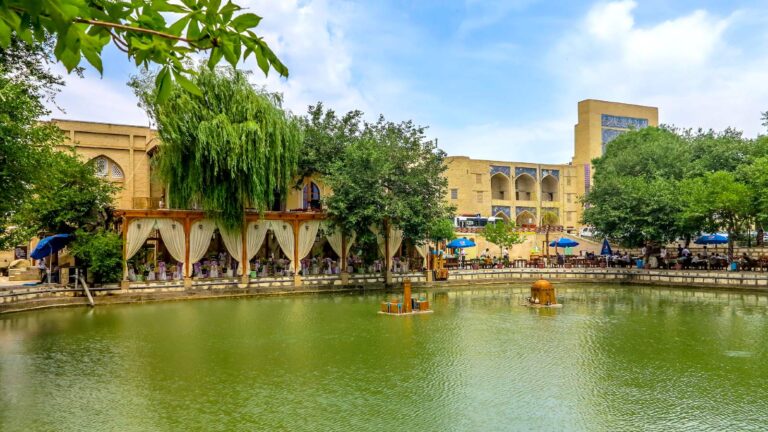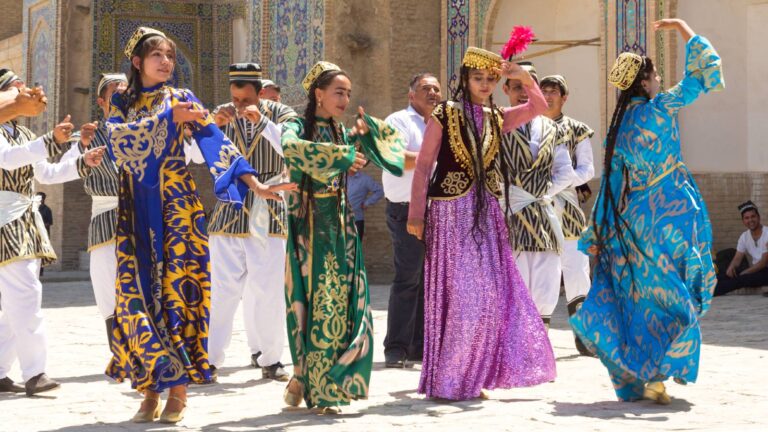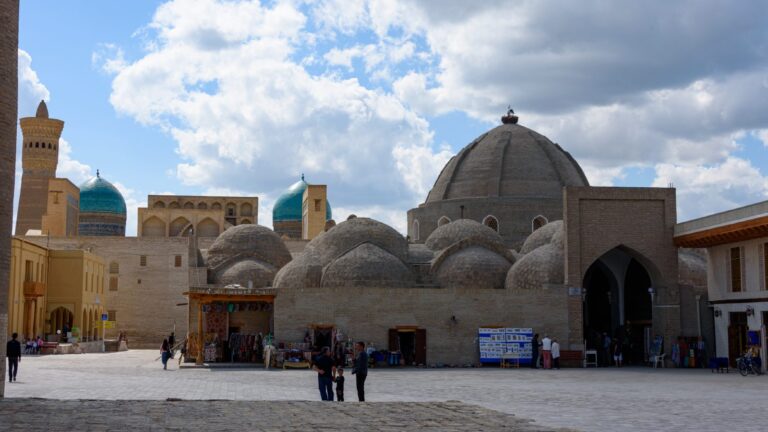Getting There
The Ark Citadel is located in the city center, on Abu Havzi Kabir Street, next to the Registan Square. The most convenient way to get around Bukhara is by taxi. Local tariffs are very low, the older generation of Uzbeks is fluent in Russian.
Those wishing to get acquainted with public transport in Bukhara should go to the stop “Registan”. Route taxis No. 51, 53, 76, 56, 58 and buses No. 8, 6, 23 stop here.
What to Expect
The perimeter of the external walls is 789.6 metres (2,591 ft), the area enclosed being 3.96 hectares (9.8 acres). The height of the walls varies from 16 to 20 metres (52 to 66 ft).
The ceremonial entrance into the citadel is architecturally framed by two 18th-century towers. The upper parts of the towers are connected by a gallery, rooms, and terraces. A gradually rising ramp leads through a winch-raised portal and a covered long corridor to the mosque of Dzhuma. The covered corridor offers access to storerooms and prison cells. In the center of the Ark is located a large complex of buildings, one of the best-preserved being the mosque of Ul’dukhtaron, which is connected to legends of forty girls tortured and cast into a well.
The cost of visiting the Ark fortress in Bukhara depends on the site you want to see. Entrance to the main part of the territory – 20,000 soums. For an additional amount (to the guards in their arms, 10,000 sum per person), you will be opened the gates to the far part of the fortress, from which the best view of the Poi-Kalyan ensemble opens. Photo and video filming are paid additionally – 3000 sum.
You can visit the fortress any day of the week. On Tuesdays, the fortress is open to tourists from 09:00 to 14:00, on the rest of the week – from 09:00 to 19:00.
History
The Ark is built on the remains of earlier structures, which constitute a layer twenty meters deep under the base arch, the layers indicating that previous fortresses had been built and destroyed on the site.
The first known reference to the Ark is contained in the “History of Bukhara” by Narshakhi (899 – 960). Abubakra wrote “Bindu, the ruler of Bukhara, built this fortress, but it soon was destroyed. Many times it was constructed, many times destroyed.” Abubakra says that when the last ruler to rebuild asked counsel of his wise men, they advised him to construct the fortress around seven points, located in the same relation to each other as the stars of the constellation Ursa Major. Thus built, the fortress was never again destroyed.
The age of the Ark has not been established accurately, but by 500 AD it was already the residence of local rulers. Here, in the fastness of the citadel, lived the emirs, their chief viziers, military leaders, and numerous servants.
When the soldiers of Genghis Khan took Bukhara, the inhabitants of the city found refuge in the Ark, but the conquerors smashed the defenders and ransacked the fortress.
In the Middle Ages the fortress was worked on by Rudaki, Ferdowsi, Avicenna, Farabi, and later Omar Khayyám. Here also was kept a great library, of which Avicenna wrote:
I found in this library such books, about which I had not known and which I had never before seen in my life. I read them, and I came to know each scientist and each science. Before me lay gates of inspiration into great depths of knowledge which I had not surmised to exist.
Legendary origin: In legend, the creator of the Ark was the epic hero Siyavusha. As a youth, he hid in the rich oasis country of Turana from his stepmother. Siyavusha and the daughter of the local ruler of Afrosiaba fell in love. The girl’s father agreed to permit them to marry provided that Siyavusha would first build a palace in the area bounded by a bull skin, obviously intended as an impossible task. But Siyavusha cut the bull skin into slender strips, connected the ends, and inside this boundary built the palace. (This is essentially the classical legend of Dido and the founding of Carthage in North Africa, as recorded in antiquity.)
Facilities Available
Today, the Ark fortress is a huge open-air museum complex. The territory of the fortress includes an archaeological museum, expositions of numismatics and epigraphy, a museum of Bukhara nature, the Childukhtaron mosque and the Battol-Gozi khonako. In total, there are 8 museums on the territory of the historical and architectural complex “Citadel Ark”, containing more than 80 thousand exhibits. The most interesting places to visit:
- Exposition “Writing in Bukhara” in the Jome Mosque. Unique calligraphic tools and ancient books are presented. Among them is the handwritten Quran in calligraphic handwriting.
- Archaeological Museum. The museum exhibits finds for the entire existence of settlements at this place. Moreover, the exposition is constantly replenished, excavations are being carried out in our time.
- Museum of Nature. The exposition includes samples of flora and fauna of the environs of Bukhara, models of irrigation structures.
- Department of numismatics. It presents unique samples of old coins circulating in different periods of Bukhara’s history.
- Zindan prison. A frightening dungeon and a pit for the guilty. The prison cell accommodated up to 40 inmates.
- Stables yard. A utility room where you can learn about the military equipment of horses and their role in the defense of the city.
- Throne yard. A skillfully carved canopy was installed in the courtyard, under which the throne of the emirs of Bukhara was placed.

